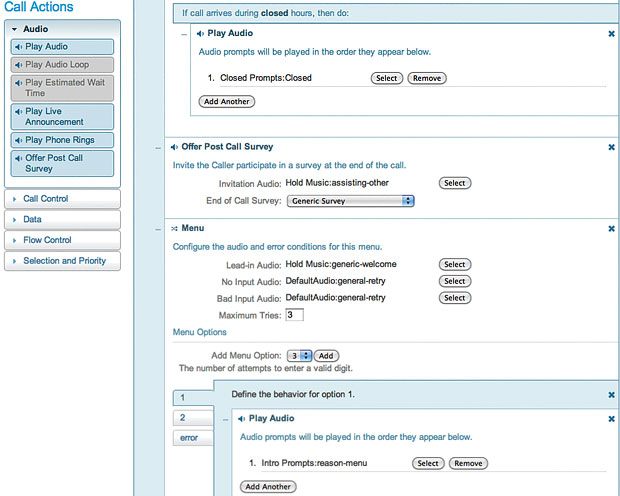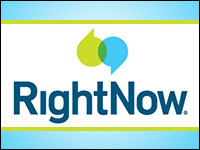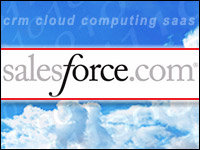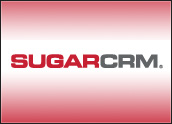
LiveOps, a contact center software and call center outsourcing provider, recently announced six new features designed to enhance its contact center cloud solution. The enhancements include Call Flow Authoring Studio, configurable recording, real-time configurable dashboards, call visualization reporting, APIs and powerful administration tools.
LiveOps, which began in 2003, currently offers cloud-based contact center solutions: Contact Center Cloud, an end-to-end application hosted in the cloud; and call center outsourcing, an independent contractor service that the company refers to as a “workforce in the cloud.”
One-Stop Analytics
The Contact Center Cloud is intuitive, powerful, simple and scalable, Paul Lang, senior vice president of product management and marketing, told CRM Buyer.
It can manage and route traditional telephony from a browser and integrate various customer service desktops with APIs, he noted, adding that it is a very flexible and very scalable platform with a rich, robust feature set.

The system’s routing capability includes queuing, routing and skills-based routing. It also includes real-time dashboards, call recording, quality monitoring, auditing based on agent performance, analytics and reporting.

“It really is one-stop analytics from the browser interface,” Lang said.
Companies can use the completely revamped user interface to run multiple centers discretely or manage centers across the globe.
Companies in diverse industries, including high tech and healthcare, use LiveOps products for their call center needs Lang said.
Customers also vary by size, because using a flexible and simple browser-based solution levels the playing field for small and large companies, Lang pointed out. There is no need for a large IT investment.
Breaking the Logjam
LiveOps specializes in hosted solutions that allow businesses to acquire technology while conserving cash, Donna Fluss, president of DMG Consulting, told CRM Buyer.
The recession helped break the logjam that stopped companies from using hosted technology, and its widespread adoption promises to democratize contact centers, said Fluss.
Although hosted solutions are certainly not limited to small and mid-sized companies and have been replacing some premise-based systems, small companies that never had contact centers can benefit substantially from their availability.
“It’s growing very significantly,” Fluss observed.
Cloud Is Gaining Traction
LiveOps is finding its greatest success with mid-sized contact centers because this is where the cloud is gaining traction, Lang also noted.
In this niche, there is less concern about security and other issues with cloud computing, and there is greater adoption of the cloud, he added. For mid-sized companies that have the same needs as larger companies but are hampered by smaller IT budgets, the cloud is more of a natural choice.
The cloud gives companies enough flexibility, scalability and simplicity to concentrate on business without having to worry about putting operations on hold for months to configure the contact center system, Lang explained.
Companies can have control across the application with a simple subscription-based monthly fee. In addition, LiveOps has about three to four software releases with new features each year.
“We’re always innovating,” said Lang.
Contact Center Specialist
The strength of LiveOps as a contact center solution lies in its outsourcing capabilities along with its ability to offer hosted stand-alone contact centers, Fluss observed.
“They do understand contact centers,” she said.
Since this is a relatively new market, however, there is much room for improvement, especially in an industry populated with many vendors. LiveOps offers good contact center services, but many people do not know about them yet, observed Fluss.
LiveOps needs to be more targeted and more focused to help them stay competitive in an ever-changing market, she advised.
Security remains a concern for some companies that may be exploring hosted solutions. Some companies will never accept the cloud model because of this concern, Fluss explained.
However, hosting companies such as LiveOps have made huge investments to improve security, she added, and as a result, the number of organizations hesitating because of worries over security has declined.
“We have a very secure platform,” Lang maintained.
Buyer’s Market
When choosing a customer service solution, a business should keep track of its goals and take the time to work through them, Jeff Furst, founder, president, and CEO of Furst Person, told CRM Buyer.
It is a good idea to develop a proof of concept and mock scenarios, he said, so that a company can evaluate what it wants to achieve. In this manner, it can develop criteria to evaluate potential customer service vendors.
A company should look for a vendor that allows it to test drive a customer service solution first, recommended Furst. That can be a tremendous help in evaluating a product.
“Can the vendor set up a sandbox?” he asked. “Make sure that the tool can do what you want.”
Some solutions are simply better than others, noted Fluss, while some work better in certain situations. The customer service market offers many good choices, both on-premise and hosted.
“It’s a buyer’s market right now,” Fluss observed.
It is also an emerging and changing market, with significant investment taking place, she pointed out.
New companies and new technologies will alter the dynamic and pricing structure, which will be a good thing, said Fluss. “I’m really liking what I’m seeing now.”




















































